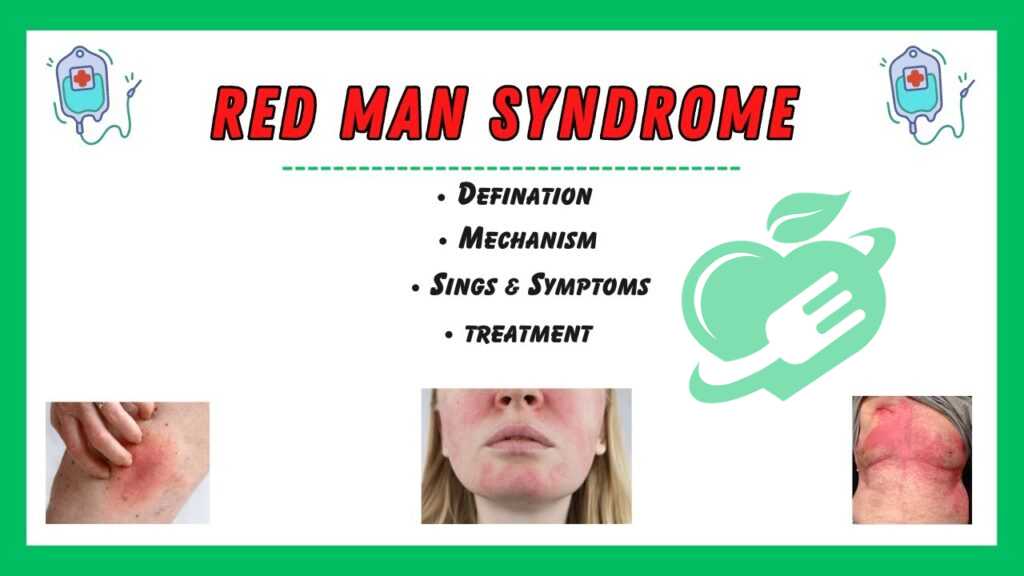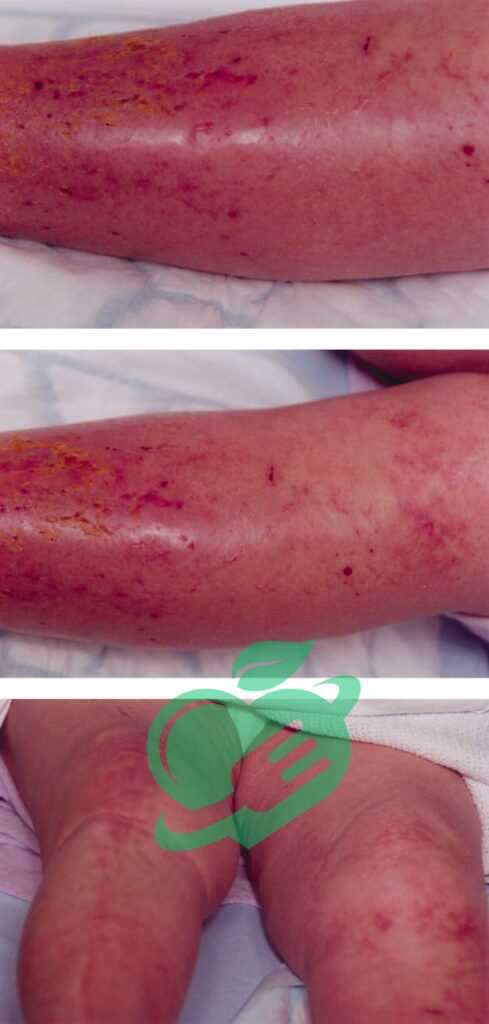Red Man’s Syndrome: What You Need to Know

What is Red Man’s Syndrome?
Red Man’s Syndrome happens when you get a bad reaction while getting the antibiotic vancomycin. You might see it as flushing, a rash, or low blood pressure, and it usually shows up right after the medicine starts working. Even though it doesn’t fit the definition of an allergy, it can still be pretty upsetting. Medical folks often come across this in hospitals, especially if vancomycin is given too fast.
Causes of Red Man’s Syndrome
The main thing that triggers Red Man’s Syndrome is how quickly the vancomycin is infused. If it goes in too fast, it can cause your body to release histamine, which leads to flushing and rash symptoms. Here are some things to keep in mind:
- Infusion Rate: The faster the infusion, the higher the chances of symptoms popping up.
- Patient Factors: If someone has certain health conditions or takes other meds that affect histamine, they might react more.
- Histamine Release: This is a big player when it comes to those symptoms we see during a reaction.
This syndrome shows how crucial it is to follow the right guidelines when infusing medicines. Knowing these details helps healthcare providers manage their patients’ reactions better.
Read also: Why Every Man Should Try a Honey Pack.

Signs and Symptoms
When you think of Red Man’s Syndrome, the first thing people notice is skin symptoms. Here are some common ones:
- Flushing: You might notice your neck and face turning bright red and spreading to your chest.
- Rash: You could get hives that itch and feel uncomfortable.
- Warmth: The areas affected might feel warmer than usual.
Many people find this uncomfortable. One person described how shocking it was to see their skin turn such a vivid red during a treatment, and it made them worry they were having a severe allergic reaction. This visible effect can skyrocket anxiety for both patients and those caring for them.
Systemic Symptoms
Along with those skin symptoms, Raynaud’s Syndrome can also lead to various systemic reactions. These might include:
- Hypotension: You could experience a drop in blood pressure that makes you feel lightheaded or faint.
- Tachycardia: Your heart rate might speed up as your body tries to respond.
- Chills or Fever: Some people might feel chills, which can add to the discomfort.
Because these symptoms can pop up, it’s super important for healthcare pros to keep a close eye on patients during infusions so they can step in quickly if needed.
Read also: Harnessing the Health Benefits of the Yellow Wasp: What You Need to Know.
Risk Factors for Red Man’s Syndrome
Patients and healthcare providers need to know what might make a person more likely to have Red Man’s Syndrome. Here are some key risk factors:
- Infusion Rate: Getting vancomycin too quickly can raise the chances of symptoms. The best practice is usually to infuse it for at least one hour.
- Previous Reactions: If someone has had bad reactions to antibiotics before, they could be more sensitive.
- Concurrent Medications: Meds that affect histamine levels or mast cell stability could increase the risk.
- Underlying Health Conditions: Health issues like kidney problems can change how the body handles the drug and lead to a higher chance of reactions.
A nurse in an oncology unit had to set strict rules for how to give vancomycin after multiple patients had reactions because of fast infusions.
How is Red Man’s Syndrome Diagnosed?
Diagnosing this syndrome usually comes down to observing symptoms and going over the patient’s history. Key things to look out for are:
- Clinical Evaluation: Healthcare workers will check for any skin changes and signs of issues during or after the infusion.
- Patient History: Notes on any past bad reactions to vancomycin or similar drugs help give context.
- Resting Conditions: Watching symptoms during and after the infusion can make it clearer if they appear shortly after starting the medicine.
Having a diagnosis down pat allows for quick management and might even influence decisions on treatments later, keeping patients safe.
Read also: Determining the Perfect Duration for Red Light Therapy

Treatment and Management
When Red Man’s Syndrome shows up, moving fast to ease symptoms is important. Common first steps include:
- Slowing Down Infusion: A common first step is to reduce how fast vancomycin is given.
- Medications: Antihistamines like diphenhydramine can help with itching and rashes. In some cases, corticosteroids might be needed for more serious reactions.
- Monitoring Vital Signs: Keeping track of blood pressure and heart rate helps catch any systemic reactions quickly.
A nurse shared a story about a patient who started flushing during a vancomycin infusion. By slowing the infusion and giving them an antihistamine right away, they managed everything without problems.
Long-Term Management Strategies
Once you have Red Man’s Syndrome under control, making sure it doesn’t happen again is key. Some long-term ideas include:
- Altered Infusion Protocols: Giving vancomycin over longer periods can help prevent issues.
- Pre-Medication: For people who have had Red Man’s before, giving antihistamines beforehand might help.
- Patient Monitoring: Regular check-ins can help catch any further reactions or side effects, ensuring ongoing safety during treatment.
These strategies help improve how patients feel about their care and build trust in their treatment plans.
Preventing Red Man’s Syndrome
Preventing Red Man’s Syndrome is a team effort between healthcare providers and patients. Here are some good ways to lower the chances of a reaction when receiving vancomycin:
- Infusion Protocols: Give vancomycin over the span of at least one hour to help the body handle it better.
- Dilution Practices: Making sure vancomycin is diluted properly can reduce fast infusion reactions.
- Pre-treatment Strategies: Offering antihistamines or corticosteroids to those who have had reactions before can add an extra layer of protection.
One nurse mentioned that changing their infusion practices led to fewer cases of Red Man’s Syndrome.
Educating Patients
Teaching patients about Red Man’s Syndrome is super important for awareness and cooperation. Here are the key points to focus on:
- Informing Patients: Giving clear updates about symptoms and what to expect can help patients speak up during treatments.
- Recognizing Early Signs: Showing patients how to spot symptoms early can mean faster help, cutting down discomfort and anxiety.
- Open Communication: Encouraging questions can help create a trusting space where patients feel okay bringing up concerns.
Good education and smart prevention steps can help patients feel more in control of their treatment which really makes a difference in their healthcare journey.
Read also: Combatting Cloves Disease: Expert Insights and Advice.

Complications and Prognosis
While Red Man’s Syndrome usually resolves on its own, not managing it quickly and effectively can lead to problems like:
- Severe Hypotension: A big drop in blood pressure can happen, leading to dizziness or faintness.
- Prolonged Reactions: Some patients might deal with symptoms that last longer than the infusion, causing them discomfort or anxiety.
- Psychological Impact: Going through Red Man’s Syndrome repeatedly might make some patients anxious about getting treatments in the future, making it harder to stick to necessary care.
A healthcare provider talked about a patient who got nervous about further infusions due to earlier reactions that highlighted how careful management is essential.
Prognosis for Individuals with Red Man’s Syndrome
For people who have had Red Man’s Syndrome, the outlook is usually good. If managed properly, most patients can still safely receive vancomycin or similar medicines. Here’s what to know about the prognosis:
- Recovery: Symptoms often go away once the infusion is slowed down or antihistamines are given.
- Long-term Care: With the right preventive steps and clear communication, further incidents can often be avoided.
Overall, getting to know Red Man’s Syndrome helps both patients and healthcare providers tackle the issue with confidence, leading to better treatment experiences down the line.
Quick natural recipe:
A few drops of peppermint or lavender oil are applied to the temples and behind the ears, followed by a gentle massage.It provides a refreshing and relaxing sensation and is effective against tension headaches.
Read also: The Health Benefits of Red Onion You Should Know.

Recent Studies on Red Man’s Syndrome
New studies are shining a light on how common Red Man’s Syndrome is and how it works. Here are some findings:
- Incidence Rates: Studies show that about 10% of patients getting vancomycin may deal with some form of Red Man’s Syndrome, especially if given too quickly.
- Prevention Techniques: Research into infusion practices shows that slowing down the administration can make a big difference in comfort.
- Histamine Response: Some new studies are looking into how histamine is released, looking for ways to help control it with specific medications.
One study looked at data from different hospitals and came up with conclusions that could change hospital protocols for vancomycin.
Real-Life Cases and Outcomes
Real-world case studies provide great insights into how to handle Red Man’s Syndrome. In one case, a young adult getting chemotherapy had major flushing and low blood pressure after their first vancomycin infusion. By slowing down the infusion and giving antihistamines before the next infusion, they completed their treatment without any issues.
These instances underline the importance of personalized care and how tailored strategies can impact patient experiences and results.
Read also: Barber-Say Syndrome… a disease that turns humans into aliens.
Frequently Asked Questions
What happens if you give IV vancomycin too fast?
Symptoms may include a red rash, low blood pressure, rapid heartbeat, and angioedema, among others. While most instances are manageable, some can pose serious risks to life. 1.
What to monitor with vancomycin?
To enhance treatment effectiveness, it is important to monitor vancomycin serum concentrations, using them as an indirect measure of its efficacy. Instead of peak levels, trough levels should be observed. These trough levels ought to be assessed just before administering the fourth dose, as this is when steady-state levels are expected to be reached. 2.
Summary of Management Approaches
To sum it all up, handling Red Man’s Syndrome well depends on a comprehensive approach. Here’s what to focus on:
- Adjusting Infusion Rates: Slowing down the vancomycin infusion can cut down on reactions.
- Pre-Medication Protocols: Antihistamines can be given beforehand for those who’ve had issues before.
- Patient Monitoring: Regular checks of vital signs and symptoms during the infusion help ensure quick follow-ups when needed.
Healthcare providers need to grasp these practices since they can significantly affect patient comfort and safety during treatment.
Recommendations for Healthcare Providers
Healthcare providers are crucial in avoiding and managing Red Man’s Syndrome. Here are some practical tips:
- Educate Patients: Provide clear information about symptoms and risks so patients know what to expect.
- Implement Protocols: Set standard practices for giving vancomycin and other high-risk meds.
- Encourage Reporting: Create an open space where patients feel safe reporting any bad reactions right away.
To stay up to date on the latest health and nutrition developments in the United States, visit our website, Power Up Your Health, and gain more tips and solutions for a healthier life.



